What is lacrosse and how is it played. Where did lacrosse originate and who invented it. What equipment is needed for lacrosse. How long does a lacrosse game last. What are the main positions in lacrosse. What are the basic rules of lacrosse.
The Origins and Evolution of Lacrosse
Lacrosse, a dynamic team sport played with a stick and ball, boasts a rich history dating back centuries. Native Americans played early versions of the game as far back as the 1600s, making it North America’s oldest organized sport. The name “lacrosse” was coined by French settlers, who observed the curved sticks (or “crosses”) used in play.
Originally, lacrosse held significant cultural and spiritual importance for many indigenous tribes, particularly in the eastern half of North America. The game was often used to settle disputes, prepare for war, and even as a form of spiritual healing.
From Ritual to Modern Sport
How did lacrosse transition from a tribal ritual to a modern sport? The transformation began in the mid-19th century when Canadian dentist William George Beers standardized the rules and equipment. This codification laid the groundwork for lacrosse to spread beyond indigenous communities and gain popularity among non-Native players.
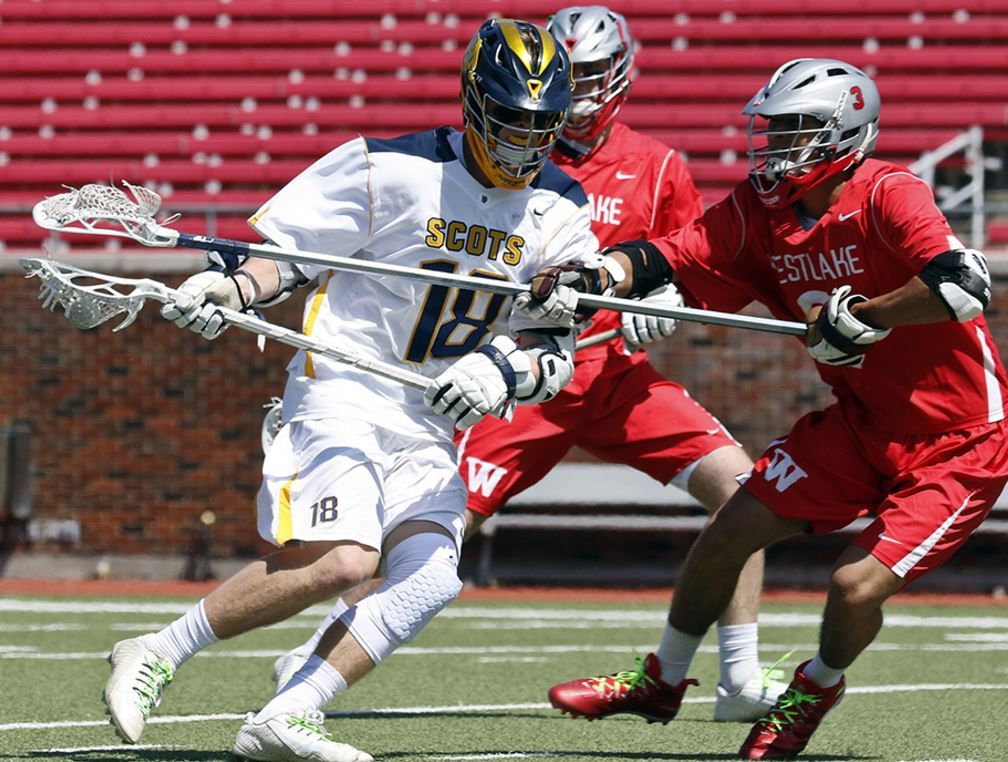
Today, lacrosse has evolved into a fast-paced, high-scoring sport enjoyed by players of all genders and ages. Its popularity has surged in recent years, particularly at the youth and collegiate levels in North America.
Understanding the Lacrosse Field and Equipment
The playing surface for lacrosse can be either natural grass or artificial turf, with many players preferring turf for its consistent ball behavior. The field dimensions vary slightly between men’s and women’s games, but generally fall within these ranges:
- Length: 110-120 yards
- Width: 53-70 yards
NCAA regulations may specify exact dimensions for collegiate play.
Essential Lacrosse Equipment
Given the fast-paced and physical nature of lacrosse, proper equipment is crucial for player safety and performance. The essential gear includes:
- Lacrosse stick (varies by position)
- Helmet (required for men, optional for women)
- Protective eyewear (required for women)
- Gloves
- Cleats
- Protective pads (varies by position and gender)
Why do men and women use different protective gear in lacrosse? The variation stems from differences in physical contact allowed in each version of the game. Men’s lacrosse permits more body checking and stick contact, necessitating more comprehensive protective equipment.
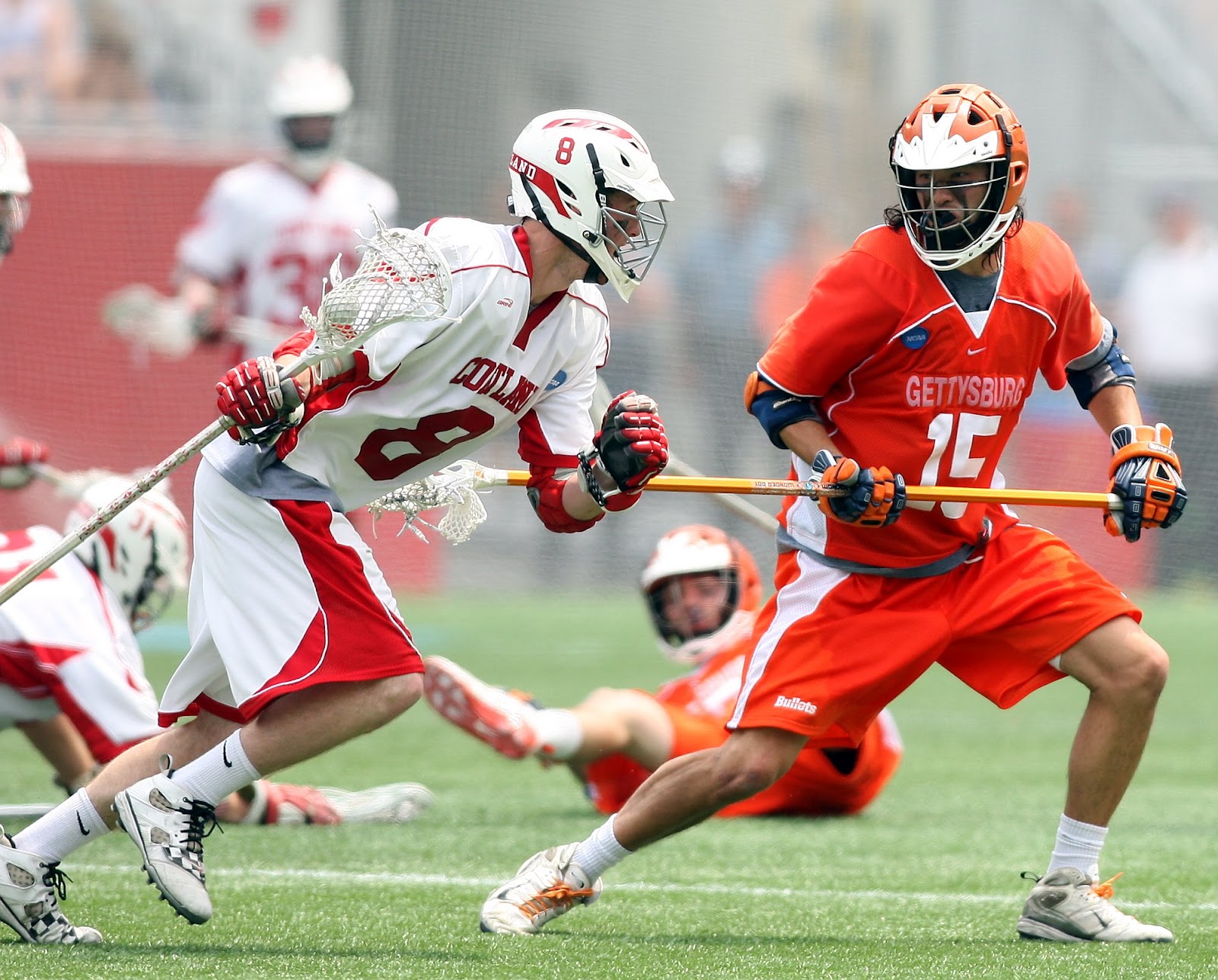
The Basics of Lacrosse Gameplay
A standard lacrosse game consists of four 12-minute quarters, making for a total of 48 minutes of play. Each team fields 10 players at a time, divided into specific roles and areas of the field.
How does a lacrosse game begin? The action starts with a face-off, where two opposing players compete to gain possession of the ball at the center of the field. From there, the objective is simple: score more goals than the opposing team by successfully throwing the ball into the opponent’s goal.
Player Positioning and Field Restrictions
Lacrosse employs a unique system of field restrictions to maintain game balance:
- 4 players must remain in the defensive half
- 3 players must stay in the offensive half
- 3 players (typically midfielders) can roam the entire field
This positioning rule creates a strategic element, as teams must carefully manage their player distributions to both attack and defend effectively.
Key Positions in Lacrosse
Success in lacrosse relies on the seamless coordination of players in four primary positions. Each role requires specific skills and contributes uniquely to the team’s performance.

Attackers: The Offensive Specialists
Attackers are the primary goal-scorers in lacrosse. Positioned near the opponent’s goal, they must possess:
- Exceptional stick skills
- Quick reflexes
- Accurate shooting
- Creative playmaking abilities
How do attackers create scoring opportunities? They use a combination of individual skills and team-based strategies, including picks, cuts, and well-timed passes to outmaneuver defenders and find openings for shots on goal.
Midfielders: The Versatile Players
Midfielders are often considered the most well-rounded players on the field. Their responsibilities include:
- Transitioning between offense and defense
- Supporting both scoring and defensive efforts
- Controlling the tempo of the game
- Winning face-offs and ground balls
The endurance and versatility of midfielders make them crucial to a team’s success, as they often influence play across the entire field.
Defenders: The Protective Wall
Defenders focus on preventing the opposing team from scoring. Their primary tasks include:

- Guarding attackers
- Intercepting passes
- Clearing the ball to midfielders
- Communicating with the goalkeeper
Defenders typically use longer sticks, providing an advantage in reaching and disrupting opponents’ passes and shots.
Goalkeeper: The Last Line of Defense
The goalkeeper plays a critical role in lacrosse, tasked with preventing goals and initiating offensive plays. Key attributes of a successful goalkeeper include:
- Quick reflexes
- Excellent hand-eye coordination
- Strong communication skills
- Mental toughness
Why is the goalkeeper often considered the most important player on the field? Their performance can dramatically influence the outcome of a game, as they not only prevent goals but also play a crucial role in starting counterattacks and setting the defensive strategy.
Rules and Regulations in Lacrosse
Lacrosse is governed by a set of rules designed to ensure fair play, player safety, and game flow. While some regulations may vary between leagues or genders, the core rules remain consistent.

Fouls and Penalties
Fouls in lacrosse can range from minor infractions to more serious offenses. Common fouls include:
- Slashing: Swinging the stick recklessly or making contact with an opponent’s body
- Cross-checking: Using the stick to push or hit an opponent
- Tripping: Intentionally causing an opponent to fall
- Illegal body checking: Making contact with an opponent in a way that violates the rules
How are penalties enforced in lacrosse? When a player commits a foul, they may be sent to the penalty area for 1 to 3 minutes, depending on the severity of the infraction. This creates a “man-up” or “man-down” situation, similar to power plays in ice hockey.
Offsides and Field Positioning
The offsides rule in lacrosse ensures that teams maintain a balance of players on both halves of the field. To avoid an offsides penalty:
- Each team must always have at least four players on their defensive half
- Each team must always have at least three players on their offensive half
This rule creates strategic considerations for player positioning and substitutions throughout the game.

Strategies and Techniques in Lacrosse
Success in lacrosse requires a combination of individual skills, team tactics, and strategic thinking. Players and coaches employ various strategies to gain an advantage on both offense and defense.
Offensive Strategies
Effective offensive play in lacrosse often involves:
- Creating and exploiting mismatches
- Using picks and screens to free up shooters
- Employing fast breaks to catch the defense off-guard
- Utilizing dodges and fakes to create shooting opportunities
How do teams maintain possession in lacrosse? Ball control is crucial, and teams often use a strategy called “settled offense,” where they patiently work the ball around to find the best scoring opportunity.
Defensive Strategies
Defensive play in lacrosse focuses on protecting the goal and regaining possession. Common defensive strategies include:
- Man-to-man defense: Each defender is responsible for a specific offensive player
- Zone defense: Defenders cover specific areas of the field rather than individual players
- Sliding and recovery: A coordinated system of help defense and rotation
- Ride: Pressuring the opposing team as they try to clear the ball from their defensive end
The choice of defensive strategy often depends on the strengths and weaknesses of both teams, as well as the game situation.

The Growing Popularity of Lacrosse
Lacrosse has experienced significant growth in popularity over the past few decades, particularly in North America. Several factors have contributed to this surge in interest:
- Increased exposure through television and online streaming
- Expansion of youth and school programs
- Growing recognition of lacrosse as an exciting spectator sport
- The sport’s blend of physical play and strategic depth
How has the growth of lacrosse impacted its development as a sport? The increasing popularity has led to more resources being invested in player development, coaching, and equipment innovation. This, in turn, has elevated the level of play and made the sport more accessible to a wider audience.
Lacrosse on the Global Stage
While lacrosse has deep roots in North America, it has been gaining traction internationally. The sport is now played in countries around the world, with international competitions showcasing the global reach of lacrosse.
The International World Games Association has recognized lacrosse, and there are ongoing efforts to include the sport in future Olympic Games. This global expansion is introducing lacrosse to new audiences and fostering international competition and cultural exchange through sport.
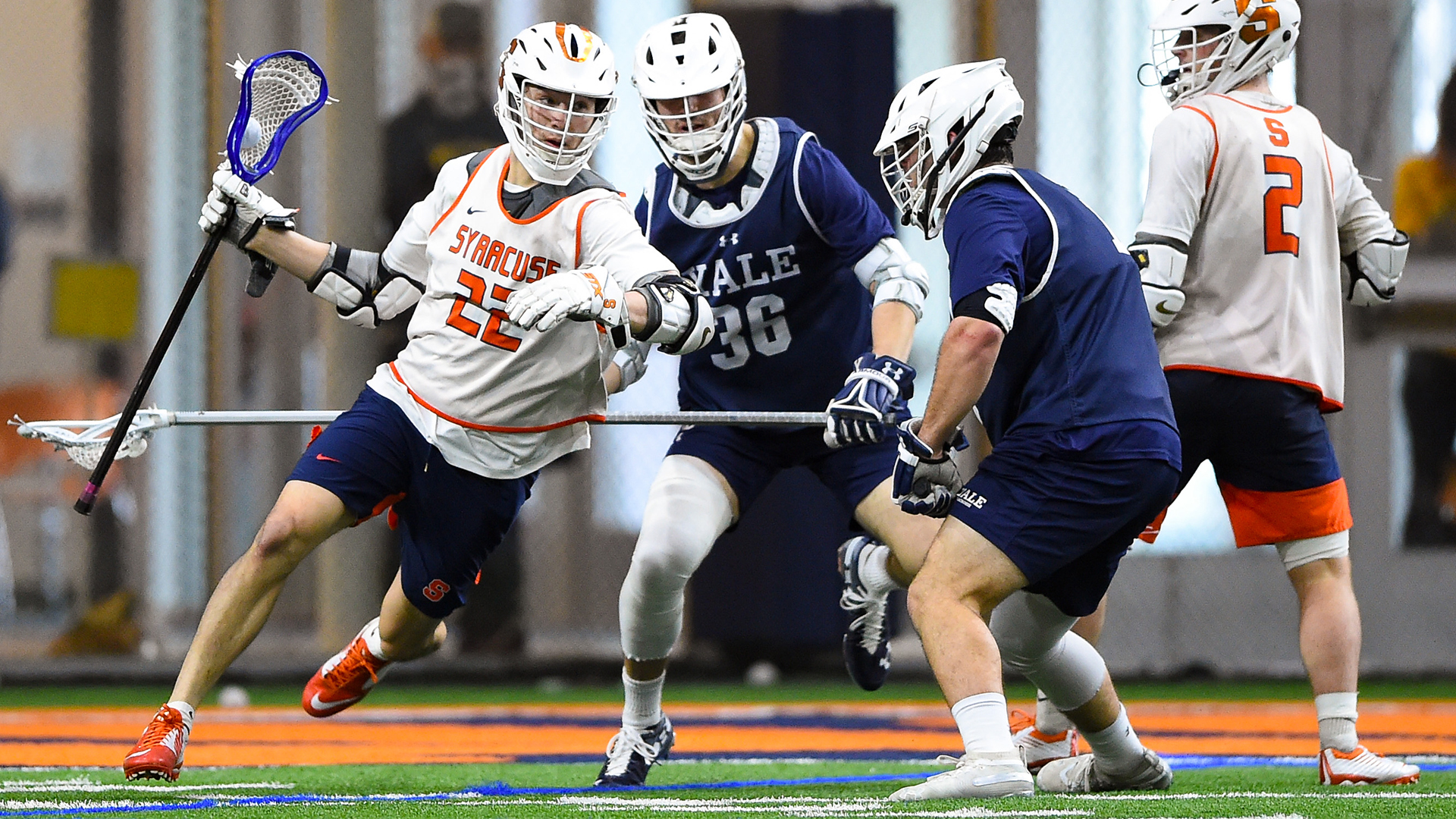
The Future of Lacrosse
As lacrosse continues to evolve and grow, several trends and developments are shaping its future:
Technological Advancements
Technology is playing an increasingly important role in lacrosse, influencing areas such as:
- Equipment design and materials
- Player performance tracking and analysis
- Referee assistance and video review systems
- Virtual reality training tools
How might these technological advancements impact the sport? They have the potential to enhance player safety, improve the quality of play, and provide fans with more engaging and interactive experiences.
Expansion of Professional Leagues
The growth of professional lacrosse leagues is providing more opportunities for players to compete at the highest level. This professionalization of the sport is likely to continue, potentially leading to:
- Increased media coverage and sponsorship
- Higher salaries for top players
- Greater investment in youth development programs
- More diverse career paths within the sport
The expansion of professional leagues could further boost the sport’s popularity and create new avenues for growth and innovation.
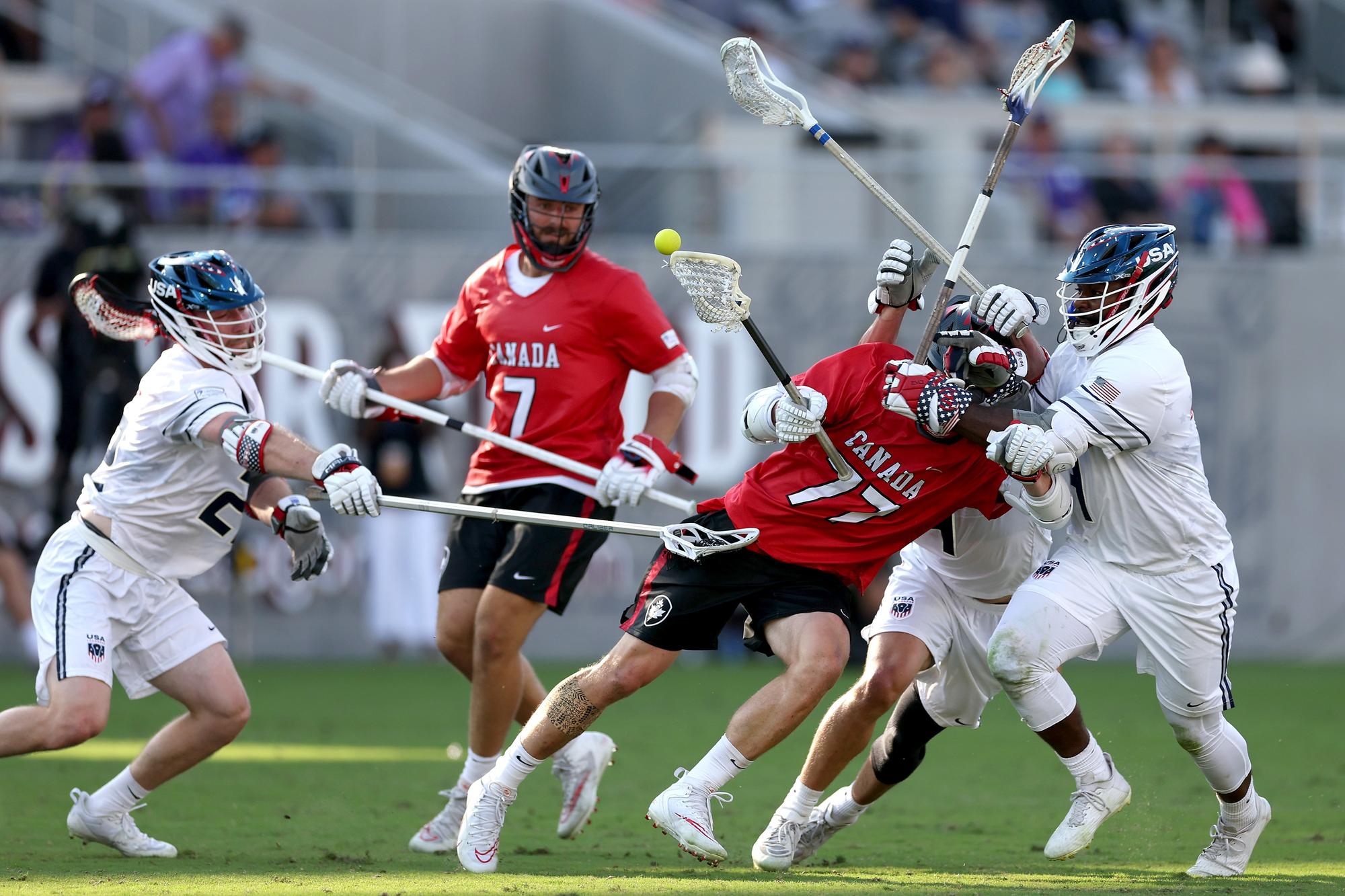
Evolving Game Formats
To appeal to a broader audience and adapt to various playing environments, new variations of lacrosse are emerging. These include:
- Box lacrosse: An indoor version played on a smaller field
- Intercrosse: A non-contact version using softer equipment
- Beach lacrosse: Played on sand, with modified rules
These adaptations allow the sport to reach new players and markets, potentially fueling further growth and innovation in the game.
As lacrosse continues to evolve, it remains true to its indigenous roots while embracing modern innovations. The sport’s blend of history, athleticism, and strategy ensures its place as a compelling and dynamic part of the sporting landscape for years to come.
What is Lacrosse?
Lacrosse is a team sport that is played with a lacrosse stick and lacrosse ball. As a game that was played by Native Americans all the way back to the 1600s, it is considered to be the oldest organized sport in North America.
Players in lacrosse use the head of a lacrosse stick to carry, pass, catch, and shoot the ball into the goal. It is a sport for both men and women, although there are slightly different rules for each gender. It is among the most popular youth sports in the country, and has seen a large growth in popularity over the past decade.
History
Lacrosse is one of the varieties of stick ball games that were played by American Indians at the time of European contact. Because of how early on the game was being played (all the way to the 1600s) we don’t know the precise history of the sport. It was most popular on the eastern half of North America by tribes in the southeast and Great Lakes areas. The sport of lacrosse was given its name by early French settlers.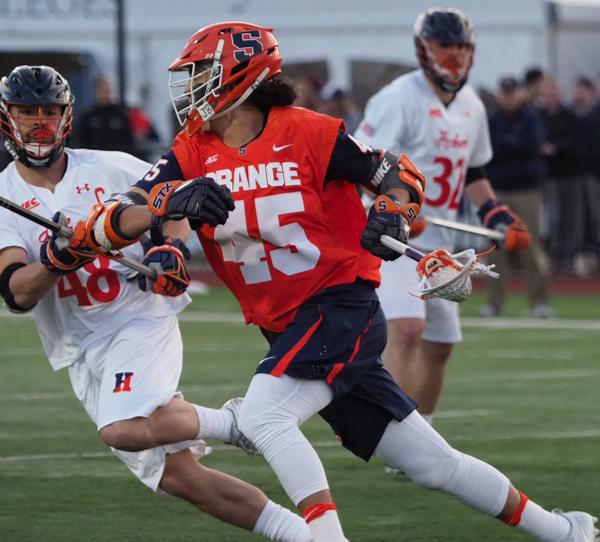 They used the generic term for any game played with a curved stick (crosse) and a ball.
They used the generic term for any game played with a curved stick (crosse) and a ball.
Playing Surface
The surface of a lacrosse field is typically turf, but it can be played on grass as well. For lacrosse players, turf is typically the preference because the flat surface will keep the ball in control. A regulation men’s and women’s unified lacrosse field is typically 110 yards long with around 53 to 60 yards in between the sideline. An NCAA men’s field requires a 60 yard width between the sidelines and 110 yards in length. An NCAA women’s lacrosse field can be between 110 and 120 yards long with a width of 60 to 70 yards.
Equipment
Lacrosse is a sport that is very fast paced and involves a lot of physical contact. Therefore, there is a large amount of equipment you will need to protect yourself from injuries. Helmets are a requirement to wear for all men’s lacrosse players, whereas women are required to wear goggles, since they do not get in as many collisions. Cleats are another piece of equipment that athletes will need in order to perform at a high level. Players will also need gloves that will protect the fingers, hands, and wrists, while still allowing the hands to move freely and hold the stick. Most importantly, players will need a stick. The stick will vary in size and style depending on what position you are playing, as offensive players typically have smaller sticks than the defensive players.
Cleats are another piece of equipment that athletes will need in order to perform at a high level. Players will also need gloves that will protect the fingers, hands, and wrists, while still allowing the hands to move freely and hold the stick. Most importantly, players will need a stick. The stick will vary in size and style depending on what position you are playing, as offensive players typically have smaller sticks than the defensive players.
Gameplay
A lacrosse game has a duration of four quarters, each of them being 12 minutes long. On the field there are ten players for each team. Four of them must stay on the defensive half, three must stay on the offensive half, and three of them can go anywhere on the field. The game starts with a face-off between two players on each team.
Positions and Roles
In lacrosse, there are four main player positions on a team: defenseman, midfielder, attackman, and goalkeeper.
Defender
A defender’s main priority is to protect their goal. Working with the goalie, defenders make sure the opponent does not score. Defenders use longer sticks to allow them to block or deflect passes and shots.
Working with the goalie, defenders make sure the opponent does not score. Defenders use longer sticks to allow them to block or deflect passes and shots.
Midfielder
Midfielders play all over the lacrosse field. Because they play both offense and defense, a good midfielder needs speed and endurance. Transition is one of the most important tasks for a midfielder, as they need to be able to move from defense to offense to create an advantage.
Attacker
The main priority of an attacker in lacrosse is to score goals. Each lacrosse team will have three attackers, and they will always stay on the offensive side of the field. These players must have superior skills in passing, faking, and other moves to get a clear shot of the goal.
Goalkeeper
The goalkeeper can be considered the most important player in the sport. They are the last line of defense and need to keep the opponent from scoring. A goalie must have superb hand-eye coordination and very quick hands. A goalie also needs to be tough, as they will be hit by the ball at really high speeds during a game.
A goalie also needs to be tough, as they will be hit by the ball at really high speeds during a game.
Rules and Regulations
In lacrosse, there are plenty of rules and regulations that must be followed. The rules in lacrosse range from the equipment that is being worn all the way to penalties. While there are some rules that vary depending on the league, the majority of the core rules stay the same.
Fouls: Fouls can include tripping, cross checking, slashing, or any other kind of unnecessary roughness. When a player commits a foul, they will be put in the penalty area for 1 to 3 minutes. A player is removed from the game if five personal fouls are committed.
Offsides: Midfielders are the only players who can enter any area of the field. Attackmen and defensemen must always stay on their side of the field to prevent offside, the team must always have four players on each side of the field.
Face-Off: A face-off will start every lacrosse game, and there will also be one when there is a scoring play. In a face-off, two players stand with their hands and feet to the ground with the sticks laying in front of them. When the whistle blows they will fight to gain position of the ball.
In a face-off, two players stand with their hands and feet to the ground with the sticks laying in front of them. When the whistle blows they will fight to gain position of the ball.
Crease Violation: Attackmen can not step on or within the goalie’s crease until the ball goes into the net. This will not pertain to an offensive player being pushed by the defense. The team will be penalized with losing possession of the ball if this happens.
Referees and Officials
In a lacrosse game there are two or three refs working on the field. Officials need to understand the game and communicate with each other through verbal and hand signals. Officials are also responsible for checking legal equipment, tracking and approving the score, and keeping an eye out for infractions, illegal contact, and unsportsmanlike behavior.
Lingo and Terminology
Lacrosse has a large amount of slang terms that are used for the sport that may come across as confusing if you are not familiar with the sport. Below is a list of some terms that can give you a headstart on talking like a veteran.
Below is a list of some terms that can give you a headstart on talking like a veteran.
- Cradling: Rocking the stick back and forth to create a force that will keep the ball in the pocket.
- FOGO: A term for a player who takes a face-off then runs off the field as soon as possible. Stands for face-off, get off.
- Goose: When a player uses the stick to knock a ground ball to a teammate rather than picking it up.
- Top Shelf: The upper area of the goal below the crossbar.
- Gilman: When a defensive player throws the ball as far as possible to the offensive end of the field instead of passing the ball to a teammate.
- Flow: Long hair that flows out of the helmet. Very popular hairstyle among lacrosse players.
Coaching
A lacrosse coach is a vital part of the team and is crucial in helping the players improve and find success. At a young age, the coach is responsible for teaching the players the basic fundamentals of the game and emphasizing the importance of fun. At the higher levels, the coach is responsible for strategizing and helping the team perform at the best of their abilities.
At the higher levels, the coach is responsible for strategizing and helping the team perform at the best of their abilities.
It is very important for coaches to develop trust with their players. A coach’s relationship with his or her players is a very important part of the team finding success. They do not need to be best friends with their coach, but the players must have respect for their coach if they are going to find success. Coaches also come up with drills for practice in order to develop and improve the players. During these practices, they also come up with gameplans on how they can win their upcoming games. Without a good coach, a lacrosse team is going to be lost and unsuccessful.
Skills and Techniques
A good lacrosse player has a lot of skills and experience that allows him or her to be successful. Lacrosse players are fast, strong, and have great hand-eye coordination. Basic skills of lacrosse include scooping, passing, catching, cradling, and shooting. Along with that, lacrosse is a very physical sport that requires an understanding of checking and dodging techniques. It is extremely important for a lacrosse player to practice these skills to a point where he or she will master them. This will lead to a more rewarding playing experience and an overall more successful lacrosse career.
Along with that, lacrosse is a very physical sport that requires an understanding of checking and dodging techniques. It is extremely important for a lacrosse player to practice these skills to a point where he or she will master them. This will lead to a more rewarding playing experience and an overall more successful lacrosse career.
Strategy
In lacrosse there are offensive and defensive for different situations. Some of these situations include settled, unsettled, and powerplay. A settled situation is when all the players are prepared where being unsettled means there is a quick change in possession.
On the offensive side, a common settled offense is called a 2-3-1. This offense is formed with 2 midfielders at the top of the field, a second line in front of the net with two attackers on the wings and a midfielder in the middle, and finally a third attacker just behind the goal. These players pass the ball around or run in triangles to confuse the defense. There are some strategies that give the offense more strength, but will leave a risk if they lose the ball to a fast break.
On defense, teams typically play man to man defense where each player is assigned an offensive player to cover. There is also zone defense, where each defensive player is assigned an area or zone where to cover.
Drills
In order to develop more skill and to find success as a team overall. It is important to partake in lacrosse drills to improve your game. For each skill that comes with lacrosse, there are multiple drills that will help you improve those skills. On the defensive side, you can practice wall ball drills or keep away drills such as “monkey in the middle.”
A great drill for offense that will improve passing is when a player and partner run down the field parallel to one another passing back and forth to each other. The most effective shooting drill is probably the run, dodge, and shoot on the goal. This will allow the attackmen to improve his dodging skills, while he can practice lefty and righty shots. Along with these drills, all lacrosse players regardless of position they play should take part in speed and agility drills.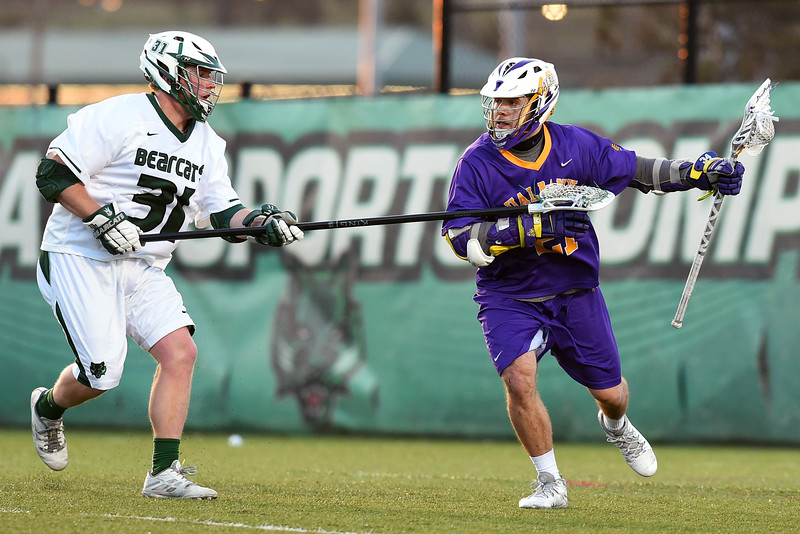
Olympic Lacrosse
Lacrosse has been an Olympic sport five times. It was an official sport in the 1904 and 1908 Olympics, but was relegated to a demonstration sport in 1928, 1932, and 1948. World lacrosse is hoping to grow its membership by 60 percent in the next five years, and hopefully return as an Olympic sport in 2028. This will face a lot of challenges, as it will be difficult to modify the squad sizes and revise rules of play. Along with that, the spread of global popularity is far from reach at the moment.
Lacrosse Brands
When it comes to sports like lacrosse, it is important to have high quality equipment. It is important to be aware of brands that make equipment that will keep you safe and perform at a high level. Below is a list of some great brands that sell lacrosse equipment.
Youth Organizations
At a young age, it is important to get yourself involved with youth organizations. A youth organization will help develop skills and character that is vital for a young player. In just about any area, there are youth camps and programs that are available.
In just about any area, there are youth camps and programs that are available.
Metro Lacrosse: Represents 120 schools and has 92% black or hispanic participants. Does a great job in promoting diversification in the sport.
Tri-City: Premier lacrosse for upstate New York. Has age groups from kids as young as 4-8 teaches them the basics of the sport.
Atlantic Lacrosse: Devoted to showing the game of lacrosse to new players and helping experienced players enjoy the game to its fullest.
Lacrosse Coaches
As mentioned above, a lacrosse coach plays an integral role in a team’s success. Here are some successful coaches in the history of the sport.
| COACH | TEAM |
|---|---|
| Dom Starsia | University of Virginia, Chrome Lacrosse Club |
| Dave Cottle | Chesapeake Bayhawks |
| Bill Tierney | University of Denver |
| John Desko | Syracuse University |
| Acacia Walker | Boston College |
| Ann Elliot | Colorado |
Lacrosse Players
Right now, there are a large number of talented lacrosse players who play in a variety of different leagues. Here are some of the best current players along with the team they play for.
Here are some of the best current players along with the team they play for.
| NAME | LEAGUE | TEAM |
|---|---|---|
| Trevor Baptiste | Premier Lacrosse League | Atlas |
| Zach Currier | Major League Lacrosse | Denver Outlaws |
| Connor Fields | Premier Lacrosse League | Chaos |
| Marcus Holman | Premier Lacrosse League | Archers |
| Rob Pannell | Major League Lacrosse | New York Lizards |
| Randy Staats | Major League Lacrosse | Atlanta Blaze |
| Matt Rambo | Premier Lacrosse League | Whipsnakes |
| Lyle Thompson | Major League Lacrosse | Chesapeake Bayhawks |
| Tom Schreiber | Premier Lacrosse League | Archers |
Lacrosse Leagues
Lacrosse is a sport that has yet to have a professional league dominate the sport like baseball, football, and basketball. Because of this, they have more professional leagues in the country than other sports might, as there are currently five professional leagues operating in North America. College teams often play through the NCAA, and there are youth leagues that will not be difficult to find all over the country.
Because of this, they have more professional leagues in the country than other sports might, as there are currently five professional leagues operating in North America. College teams often play through the NCAA, and there are youth leagues that will not be difficult to find all over the country.
- Premier Lacrosse League
- National Lacrosse League
- NCAA Lacrosse
- Women’s Professional Lacrosse League
- Major League Lacrosse
Lacrosse Teams
All over the country there are lacrosse teams that represent different leagues. The NLL has 13 teams, the PLL has 7 teams, and the MLL has 6 teams. Below is a list of each team in these Major Leagues.
Premier Lacrosse League: Archers Lacrosse Club, Atlas Lacrosse Club, Chaos Lacrosse Club, Chrome Lacrosse Club, Redwoods Lacrosse Club, Whipsnakes Lacrosse Club, Waterdogs Lacrosse Club
National Lacrosse League: Buffalo Bandits, Halifax Thunderbirds, Rochester Knighthawks, Toronto Rock, Georgia Storm, New England Wolves, New York Riptide, Philadelphia Wings, Calgary Roughnecks, Colorado Mammoth, San Diego Seals, Saskatchewan Rush, Vancouver Warriors
Major League Lacrosse: Boston Cannons, Chesapeake Bayhawks, Connecticut Hammerheads, Denver Outlaws, New York Lizards, Philadelphia Barrage
Lacrosse Events
Whether it is a game, fan fest, or tournament, there are plenty of lacrosse events that take place year round that are great for the whole family to enjoy.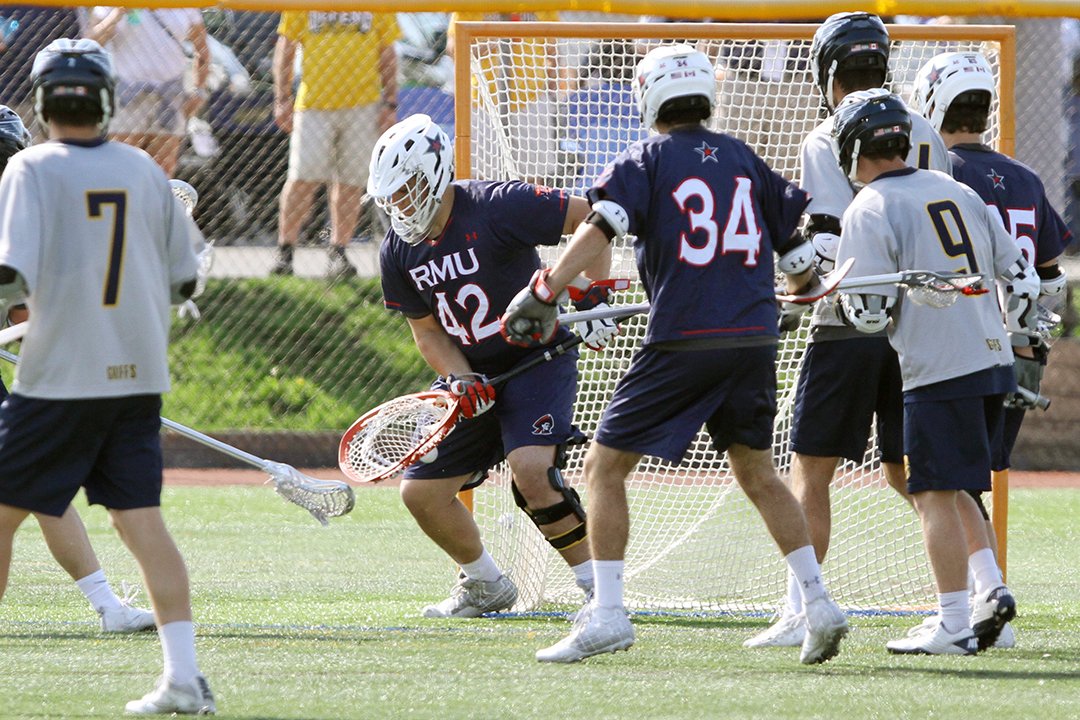 While lacrosse might not have the professional prevents that other American sports have, their NCAA programs are among the top in the country, and if there are lacrosse fans in your family, going to those games would be a great idea. Along with that, the Premier Lacrosse League is also showing lots of promise after only one year, meaning they will be holding numerous fan fest and other events that will help them grow in popularity.
While lacrosse might not have the professional prevents that other American sports have, their NCAA programs are among the top in the country, and if there are lacrosse fans in your family, going to those games would be a great idea. Along with that, the Premier Lacrosse League is also showing lots of promise after only one year, meaning they will be holding numerous fan fest and other events that will help them grow in popularity.
Lacrosse Tournaments
There are youth organizations all around the country that organize tournaments. For a youth team, lacrosse teams are really fun and exciting opportunities to play against different teams and face new challenges. Outside of youth lacrosse, there is also the NCAA tournament, which is arguably the most popular tournament in lacrosse that gets the most media coverage. Similar to March Madness in basketball, there is a single elimination tournament and the last team standing is deemed national champions.
- NCAA Tournament
- Best of the Beach
- Capital City Lax Festival
Lacrosse Books
Lacrosse has a variety of different books that do a great job in teaching you about the game. There are books that can teach you technique and strategy, give you tips on how to coach, or give you an overall history of the sport. Below are some of the most popular lacrosse books that have been written.
There are books that can teach you technique and strategy, give you tips on how to coach, or give you an overall history of the sport. Below are some of the most popular lacrosse books that have been written.
| NAME | AUTHOR(S) |
|---|---|
| The Best of Road Trip Dad | Dan Witmer |
| Men’s Lacrosse in Maryland | Tom Flynn |
| Lacrosse Essentials | Jack Kaley and Richard Donavan |
| Lacrosse Legends of the First Americas | Thomas Vennum |
| The Beast in the Crease | Fritz Hoffecker |
| Weekend Warriors | Jack McDermott |
| Women’s Lacrosse | Janine Tucker and Maryalice Yakutchik |
Lacrosse Websites
In today’s world, just about all the information you can get will be available on the internet, and lacrosse is no exception. When it comes to scores, articles, videos, rankings, and more, there is a website that can provide you with the lacrosse related information you are looking for.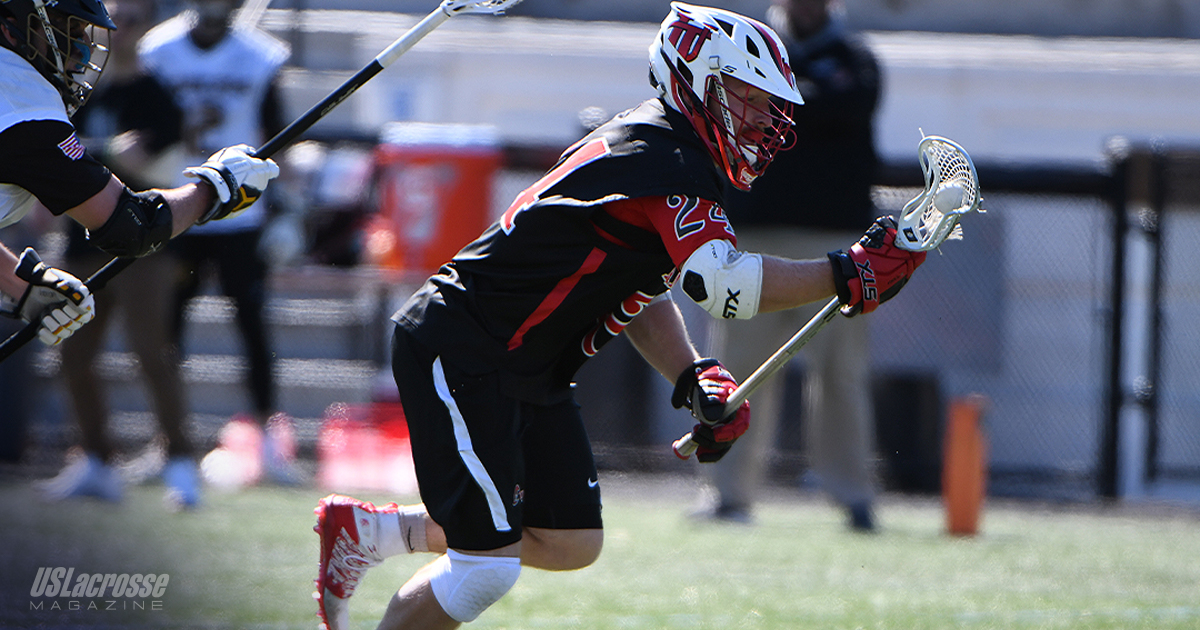
FAQ
Lacrosse is a team game originated by North American indians, where a ball is thrown, caught, and carried with a long-handled stick having a curved frame that holds the ball in place.
How dangerous is lacrosse?
Like most contact sports, lacrosse certainly comes with some moderate risks. The majority of the injuries that come are minor bruises, strains, and sprains. While significant injuries are still possible, lacrosse players typically find themselves safe when they have the proper equipment.
Is Lacrosse hard to learn?
Lacrosse is a relatively easy sport to get the hang of. The biggest thing is understanding the rules. Once the knowledge for the game is acquired, the skills will also develop over time.
Where is lacrosse most popular?
The United States is by far where Lacrosse is most popular. States such as New Jersey, North Carolina, California, and other northeast states have an extremely large popularity for lacrosse.
What are the rules of lacrosse?
A couple basic rules of lacrosse include:
- Only 10 players are allowed on the field
- Each goal is worth 1 point
- A lacrosse ball may not be touched by a players hand except by the goalie
- No opposing players may make contact with the goalie
Sport Most Like Lacrosse? Is Lacrosse Unique? ? (The Facts)
It’s a pretty intense and fast-paced sport that has been taking the athletic world by storm and gaining in popularity in the last decade or so. By the data from US Lacrosse, there are over 825,000 lacrosse players in the world, making it one of the fastest-growing sports in the world.
What sport is lacrosse most like? Is lacrosse unique? Lacrosse is a hybrid sport. It is similar to basketball in relation to how plays are set up to advance the ball to get into a scoring position. In regard to football, it is similar in that there is heavy contact, and the players wear padding to protect themselves from hits. It also bears a similarity to soccer in relation to how the field is set up.
It also bears a similarity to soccer in relation to how the field is set up.
Lacrosse is unique, in that there is no sport like it, but it bears similarities to several of the most popular sports in the world.
In this article, we are going to discuss a little more in-depth the similarities it shares with these other sports, the popularity of the game, and what makes the exclusive sport so unique.
You can also check out videos/online courses to get a better understanding of Lacrosse as a whole.
One that I can personally recommend is called the Players Academy, sponsored by Rob Pannell, where he shares pro tips on different aspects of the sport: conditioning, mental preparation and fundamentals of the game.
Now read on as I dive into the similarities between Lacrosse and other sports.
What Sport Is Lacrosse Most Similar To?
The better question would be; “What sport is most similar to lacrosse?” Lacrosse has been around significantly longer than most of the sports that are played today, by hundreds of years. In fact, it is a question that really bothers most die-hard lacrosse players and enthusiasts.
In fact, it is a question that really bothers most die-hard lacrosse players and enthusiasts.
When people ask what sport lacrosse most is like, due to peoples’ understanding of sports today, the answer really ends up being a breakdown of what elements of other sports are found in lacrosse. And, really, it’s more a matter of which sports lacrosse has influenced. So, let’s get a little more in-depth with its similarities to each sport.
Lacrosse in Relation to Basketball
When it comes to lacrosse and basketball, the rules are very different.
There is not as much contact in basketball, and the team sizes are different, with basketball being played with only 5 players on a team. However, the end goal is still the same, with the intention of getting the ball in the net.
Arguably, basketball is the most similar sport to lacrosse on this list.
Similarities Between Basketball and Lacrosse
- They utilize very similar strategies to move the ball and get it into scoring position
- They share an objective of getting the ball in the net
- When it comes to playing defense, you’re still guarding and holding your opponent
- When it comes to advancing the ball to score, a lot of the plays are very similar, if not identical
The tempo, however, is a bit faster in lacrosse.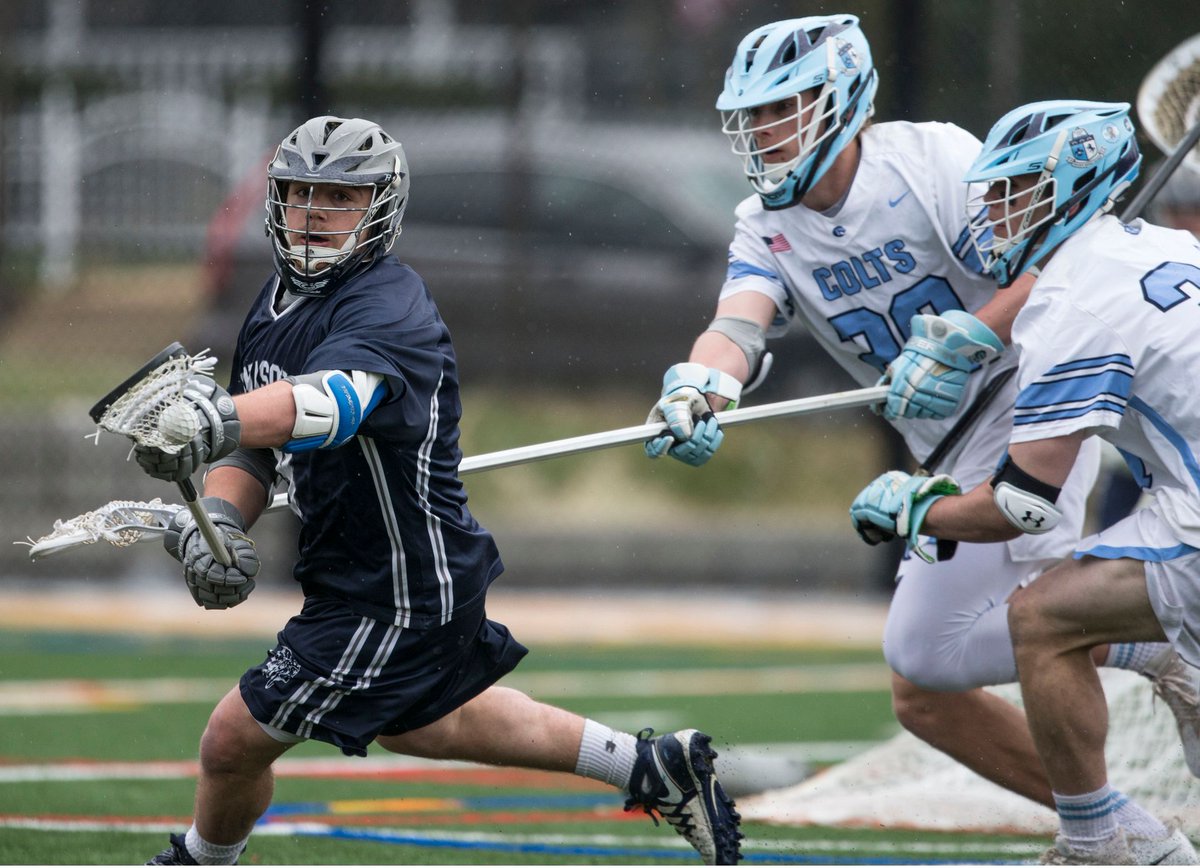 Since the playing area is larger than a basketball court, the players need to move a bit faster to get into position for a steal or to score since they have more ground to cover.
Since the playing area is larger than a basketball court, the players need to move a bit faster to get into position for a steal or to score since they have more ground to cover.
Basketball is so similar to lacrosse that there are actually basketball players in high school and college that play both sports successfully since the transition is so simple from one game to the next. To read a bit more about how basketball players transition into lacrosse, check out this article.
Lacrosse in Relation to Football
When it comes to football, the relation to lacrosse cannot be ignored or denied.
- Both are intense and rough sports and lacrosse
- Both have the potential to be even rougher at times of contact
- Both sports require speed, skill, and stamina
- Both sports are separated in quarters and halves.
The focus of the roughest parts of the game is different for each sport.
In football, there is a clear emphasis on blocking and tackling. In lacrosse, your focus is on the ball-handling with a stick, dodging blows, accurate passing, and shooting accurately.
In lacrosse, your focus is on the ball-handling with a stick, dodging blows, accurate passing, and shooting accurately.
The field in lacrosse is more open than football, and there is a lot more running involved.
While both sports have demands on stamina, lacrosse’s requirements are higher.
Other differences include that, in lacrosse, the tempo is faster and there aren’t any long breaks. Where lacrosse is concerned, the quarters are only 15 minutes long, and there is almost no break in the quarters or halves.
Lacrosse in Relation to Soccer
Soccer is another sport that shares some obvious similarities to lacrosse. Both sports are played on a similar field. However, lacrosse’s field is longer. On the other hand, soccer has a wider field. Both sports move at a fast pace and require quite a bit of stamina for the running involved.
The positions played, and the number of players needed in lacrosse and soccer is also very similar. In lacrosse. Both sports require 10 players to a team and the positions, though some are named differently, are the same. Due to the similarities, it is not uncommon for a player to crossover between sports.
In lacrosse. Both sports require 10 players to a team and the positions, though some are named differently, are the same. Due to the similarities, it is not uncommon for a player to crossover between sports.
Lacrosse and soccer have more differences than similarities:
- In soccer, the game is played with the legs of the player, in lacrosse, players use sticks
- The ball used in the game is different and significantly smaller in lacrosse
- The nets utilized are different
- Lacrosse utilizes more protective gear than soccer, with helmets and shoulder pads. When playing soccer, you only use shin guards.
- The only person that can catch a ball in soccer is the goalie. In lacrosse, any player can catch the ball as long as they do it with their lacrosse stick.
- Advancement down the field and passing is different. In lacrosse, advancement is set up similar, if not identical, to advancement in basketball. In soccer, advancement due to how the ball is passed is a bit different.

If you want to learn more about how lacrosse is so unique and its history, check out this website.
What Is Lacrosse? How Is It Played? And How Did It Come About?
Lacrosse has a rich history. It has been around for hundreds of years, and there is both an indoor and outdoor version of the game.
Lacrosse is based on a series of games that were played by the Native Americans going back to 1100 A.D. In the Canadian Aboriginal version of the game, it lasted for 2 to 3 days as symbolic warfare or worship and had anywhere from 100 to 1,000 players on the field at a time.
By the time the 1700s arrived there was already a well-established form of lacrosse being documented by Jesuit priests in what is known now as Canada. By the 1860s, there were lacrosse clubs showing up, and finally, by 1900, the sport gained so much popularity that there were clubs all over Canada.
How Lacrosse is Played
- There are two teams with 10 players on each team
- The teams are broken down by positions:
- 3 attackmen, 3 defensemen, 3 midfielders, and 1 goalie
- The objective is to throw the ball into the opposing team’s net to score on a field similar to a soccer field in appearance
- The lacrosse field is 110×60 yards
Check out this course by Rob Pannell and learn the basics and inside tips from a pro.
Equipment
- Helmets
- Shoulder pads
- Lacrosse sticks: these are sticks with nets on end.
- There are two types: those that are between 40-42 inches long (short sticks) and 52-72 inches long (long sticks)
Get all the facts about Lacrosse equipment in these three articles:
The Lacrosse Sticks
When it comes to the sticks, the short sticks are carried by the attackmen and the midfielders.
The long sticks are carried by the defensemen and goalie. The goalie’s stick is a bit different. It is also a long stick or short stick from 40-72 inches. However, the net on their stick is a bit bigger with a head as wide as 12 inches.
In Conclusion
Lacrosse is a deep-rooted and well-loved sport that has been around for ages.
It has influenced all of the other sports we know and love today and doesn’t get the widespread recognition that it deserves.
Take some time and visit your local lacrosse club to get some first-hand experience of the sport as well to better understand it.
I guarantee it will help build your appreciation of the sport and how it has directly influenced the more popular sports we play today.
Read Also: Do You Need A Mouthguard For Lacrosse?
Become a USA Lacrosse Member
Individual Members: Players, Coaches and Officials who are currently registered members of USA Lacrosse, and who are in good standing, are covered by the USA Lacrosse Insurance Program for the term of their membership. Fan members and International members do not receive insurance coverage as part of their membership benefits.
Coverage by Membership Category: How you register with USA Lacrosse dictates how the coverage will apply. For example, if you register as a player, you are covered when playing lacrosse (and not for officiating or coaching). Similarly, if you are registered as a coach you are covered for your coaching duties only; the insurance will not cover you if you decide to play in a tournament. In order for the Member Insurance Plan to cover you for more than one category of participation, you must indicate these multiple categories on your application.
In order for the Member Insurance Plan to cover you for more than one category of participation, you must indicate these multiple categories on your application.
Teams & Leagues: An important feature of the USA Lacrosse Insurance Program is that the Liability plan extends only to teams and leagues that are 100% registered with USA Lacrosse. In order for a team or league to be covered by the General Liability and Excess Liability policies, all players and coaches must be currently registered with USA Lacrosse. By doing so, your team or league as an entity will be protected by the Liability policies and you will be able to obtain Certificates of Insurance, which are typically needed in order to secure fields or facilities for lacrosse activities. In addition, the Liability plan will also extend to cover your board and volunteers if they are named in a lawsuit.
Don’t overlook this important aspect of team or league operations! Make sure your team or league is properly insured for liability so that you are not responsible for the financial and legal burden of handling a legal claim yourself. For further information on the program, refer to the insurance guide.
For further information on the program, refer to the insurance guide.
Non-Members: No insurance coverage is provided to non-members while participating in lacrosse activities. However, if you are hosting a lacrosse event, such as a camp or clinic, you can purchase USA Lacrosse Event Insurance, which will provide liability insurance to you as the organizer, cover the event itself and all participants, including volunteers — whether or not they are USA Lacrosse members. The Lacrosse Event insurance plans carry lower limits of Accident coverage, and more restricted liability coverage than that provided to USA Lacrosse members.
Lacrosse Excellence – What’s That?
Lacrosse Tip
Presented by Brian Lalley, Camp Director
Pacific Lutheran University – Boys Lacrosse Overnight & Day Camp
Bring it in!
Xcelerate Nike Lacrosse National Program Director, Brian Lalley, discusses, Lacrosse Excellence:
I recently asked the high school program I coach with, “What is Excellence?” It is a term used in areas like sports, business and academics. It is presented and discussed so often, but what it actually means and how we can maximize its impact in our personal lives and on our teams can become fuzzy. When I asked this question, it was answered with a number of different responses. Most of them were rooted in a result. “Excellence is winning the state championship,” Excellence is beating a great opponent,” were a couple.
It is presented and discussed so often, but what it actually means and how we can maximize its impact in our personal lives and on our teams can become fuzzy. When I asked this question, it was answered with a number of different responses. Most of them were rooted in a result. “Excellence is winning the state championship,” Excellence is beating a great opponent,” were a couple.
Whether it’s business, athletics or academics, everyone wants to achieve. Whether that’s a personal and/or collective goal of achievement, no great producer sets a ceiling and his/her goal is to reach the individual/collective mountain-top.
Ultimately, the result is something we do not control. It is something we influence based upon what we give to our individual and collective improvement and performance. Come competition day, we are a product of our training. Instead of focusing on that result we’re seeking, excellence in my mind is the individual and collective pursuit of getting the very most out of yourself/ourself that we possibly can on a day-to-day, moment-to-moment basis.
There are so many personal and technical elements that become a part of training and competing with excellence. Ben Bergeron, a world renowned Crossfit trainer wrote a book called, “Chasing Excellence.” He presents that before you can pursue excellence on a physical and technical levels, we have to develop the character traits (character traits are skills that are built) necessary to continually chip away at the areas that you and your team aren’t good enough at…yet.
What’s It Like to Play NAIA Lacrosse?
Have you ever wondered what NAIA lacrosse is really like? Do you want to know if playing NAIA lacrosse is for you? Is this the first time you’re hearing about the NAIA?
The good news is that I’m here to give you an insider’s perspective of NAIA lacrosse from what the level of play is like all the way to what you can expect from facilities.
What’s It Like to Play NAIA Lacrosse? A Player’s Perspective
My name is Tucker La Belle.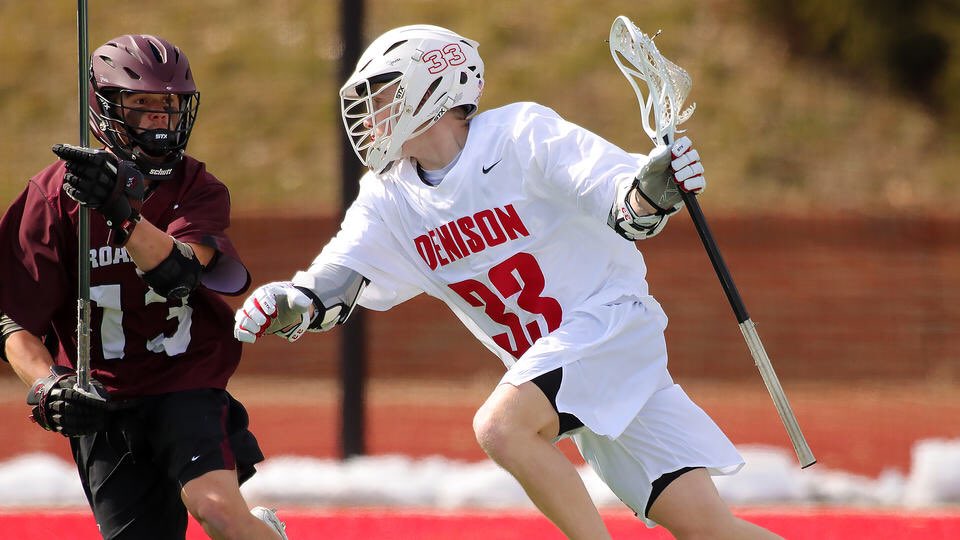 I’m a Lax All Stars writer and senior captain on the Clarke University men’s lacrosse team. Clarke is a small liberal arts university in Dubuque, Iowa, that competes in the NAIA (National Association of Intercollegiate Athletics) as part of the KCAC (Kansas Collegiate Athletic Conference).
I’m a Lax All Stars writer and senior captain on the Clarke University men’s lacrosse team. Clarke is a small liberal arts university in Dubuque, Iowa, that competes in the NAIA (National Association of Intercollegiate Athletics) as part of the KCAC (Kansas Collegiate Athletic Conference).
Background of the NAIA
The NAIA was founded in 1940 and is an alternate athletic governing board to the NCAA. The majority of NAIA schools are smaller liberal arts universities and colleges that would compare to NCAA DII and DIII schools in size, with the exception of a few universities in the NAIA with large enrollment numbers. This last athletic season the NAIA had 249 schools from across the U.S. and even Canada competing in many sports.
What makes the NAIA great is that most NAIA schools offer athletic scholarships that compare well to the NCAA DII level. This is what catches the attention of many athletic recruits, lacrosse players in particular. On the lacrosse side, there are 33 NAIA schools that sponsor lacrosse as a full varsity sport. This means there are great scholarships and often quite a bit of financial support for the programs.
This means there are great scholarships and often quite a bit of financial support for the programs.
Why NAIA lacrosse?
While I was going through my recruiting journey in Ohio, most of my interest was coming from NCAA DII and DIII schools, along with several NAIA schools. At the time, I didn’t know much about NAIA lacrosse and decided to verbally commit to an NCAA DII school my sophomore year of high school.
Tucker La Belle suited up for Clarke.
Fast forward to the start of my senior year, and I got a call from Clarke University. After my first visit to the school, I made the choice to decommit from the NCAA DII school and switch over to the NAIA.
I loved the small campus that had a major emphasis on athletes and college education. Most NAIA schools offer a high level of college education paired with very competitive college athletics. This is what appealed most to me at the time.
After three years of playing in the NAIA, I can tell you that I truly feel like I made the right decision. In the NAIA, athletes are supported as people and students and not just athletes. We aren’t just a number but instead a part of the greater campus community. For me, this community aspect allowed me to become our student body president on last year and this year. Other players also get involved on and off campus through a variety of opportunities.
In the NAIA, athletes are supported as people and students and not just athletes. We aren’t just a number but instead a part of the greater campus community. For me, this community aspect allowed me to become our student body president on last year and this year. Other players also get involved on and off campus through a variety of opportunities.
Level of play
The NAIA is still new to lacrosse, but I can assure you the level of play is still very much there. With players coming from all across the country and transferring from NCAA schools, the games are as competitive as one could ask for. However, newer NAIA programs can have a period of struggle and will often show scores that only represent the newness of the programs.
In my opinion, most NAIA lacrosse programs sit between the NCAA DII and DIII levels of play in comparison. There are some top-tier NAIA teams that could compete with most teams from both those divisions. For us at Clarke, we often mix in several NCAA DIII games each year, which are often a good benchmark to understand where we sit at for level of competition.
There are some top-tier NAIA teams that could compete with most teams from both those divisions. For us at Clarke, we often mix in several NCAA DIII games each year, which are often a good benchmark to understand where we sit at for level of competition.
Again, with NAIA teams being across the country levels of play can and will vary every year, but I feel the consistent programs would compete well with the levels of play listed above. This level of play has noticeably increased with every year I’ve played as more and more players discover the NAIA and decide to commit or transfer in.
If you want to continue competing at a high level, get a college education, and also make an impact on your campus, the NAIA might just be for you.
The Gear
No, I didn’t forget about the gear. How could I?!
I love gear, and each NAIA school has its own gear situation. But I can say that most of the schools really treat the lacrosse teams to quite a bit of lacrosse gear and apparel, many even more than NCAA DII and DIII schools.
While I can’t speak too much to other programs, I can give you a rundown of what we get at Clarke as an example. In my three years here, we have had three pairs of gloves, two helmets, two sets of elbow pads/guards, and two gear bags. On the apparel side, we normally get several long-sleeve workout shirts, several short-sleeve shirts, two pairs of shorts, a polo or quarter zip, and hoodies and sweatpants each year, along with backpacks every two years on average.
Again, that’s just one sample of what our program gets. I know of others that get more and others that get less. It really just depends on the program and their budget. Each team generally has a brand deal with companies such as Warrior, Nike, STX, Maverik, and many others. You can see some images of recent gear hauls above.
youtube.com/embed/wtuAeNZ9d4A?feature=oembed” src=”data:image/gif;base64,R0lGODlhAQABAAAAACH5BAEKAAEALAAAAAABAAEAAAICTAEAOw==”/>
Facilities
Facilities are where the NAIA really shines compared to the other two levels referenced. For us here at Clarke, we have two turf fields, two weight rooms, and locker rooms.
Again, this is just a sample from our program. In my three years, I have played at many other schools and have constantly been impressed by the facilities and fields. One in particular I really like is Columbia College in Columbia, Missouri. You can find that pictured below, along with images from Clarke.
Bottom line here is that I promise most people will be very impressed by NAIA lacrosse venues.
Travel
Travel at the NAIA level is just like other lacrosse programs across most levels: charter buses or school-owned buses, hotels for long road games, meals covered by the school, and athletic trainers at both home and away games. You get everything you could need to focus on the games ahead.
Practices and team lifts
This is where each program really has its own standard and way of doing things, but I can again do my best to fill you in on my experiences.
In the fall, we normally start after the first week of classes with team bonding and meetings. From there, we jump into a fall practice schedule consisting of three days of lifting and three days of contact practice. Many of these fall days will be doubled up with lifting and practice as well as conditioning exercises outside of practice.
youtube.com/embed/0Qcr5k2IS50?feature=oembed” src=”data:image/gif;base64,R0lGODlhAQABAAAAACH5BAEKAAEALAAAAAABAAEAAAICTAEAOw==”/>
In the spring, we open up the preseason by having the team back on campus two weeks prior to school starting. These two weeks are all lacrosse and getting the team going. Then, depending on game schedules, we will practice four-to-six days a week on average, with fewer days of lifting in season. This seems to be pretty similar across the board for NAIA schools, but I have heard of some who do less or more.
The challenges
At an NAIA school, you are truly expected to be a student and athlete. Education is important at these schools and often quite competitive. Balancing lacrosse and education can often be a grind and not all are cut out for it. You need to really find a routine fast and put in extra work in the classroom as well as on the field.
Because we have fewer days together in the fall compared to many NCAA programs, players are expected to be conditioning and working out a lot on their own in order to be prepared. Balancing all this has challenged me at times, but with a routine, it will become clockwork.
Balancing all this has challenged me at times, but with a routine, it will become clockwork.
At this level you aren’t going to be looked at any differently than other students around you. No special treatment or special tutors for the most part. You have what the rest of the students have. This all takes a special amount of dedication to your sport and school work but can be very rewarding. With all that said, if you are serious about your education and continuing lacrosse, the NAIA can be a very good home for you.
Tucker La Belle warming up with his Clarke teammates.
The bottom line
I think the NAIA will continue to grow in lacrosse. From the campus sizes to the athletic support, these schools can make for a great home to continue your sport and education. Just know that you will need to put in lots of extra hours in the weight room and library in order to find your success.
College isn’t easy, and it’s not supposed to be. College lacrosse has made for the best three years of my life thus far, and the NAIA has been a great level for myself and so many other players I know.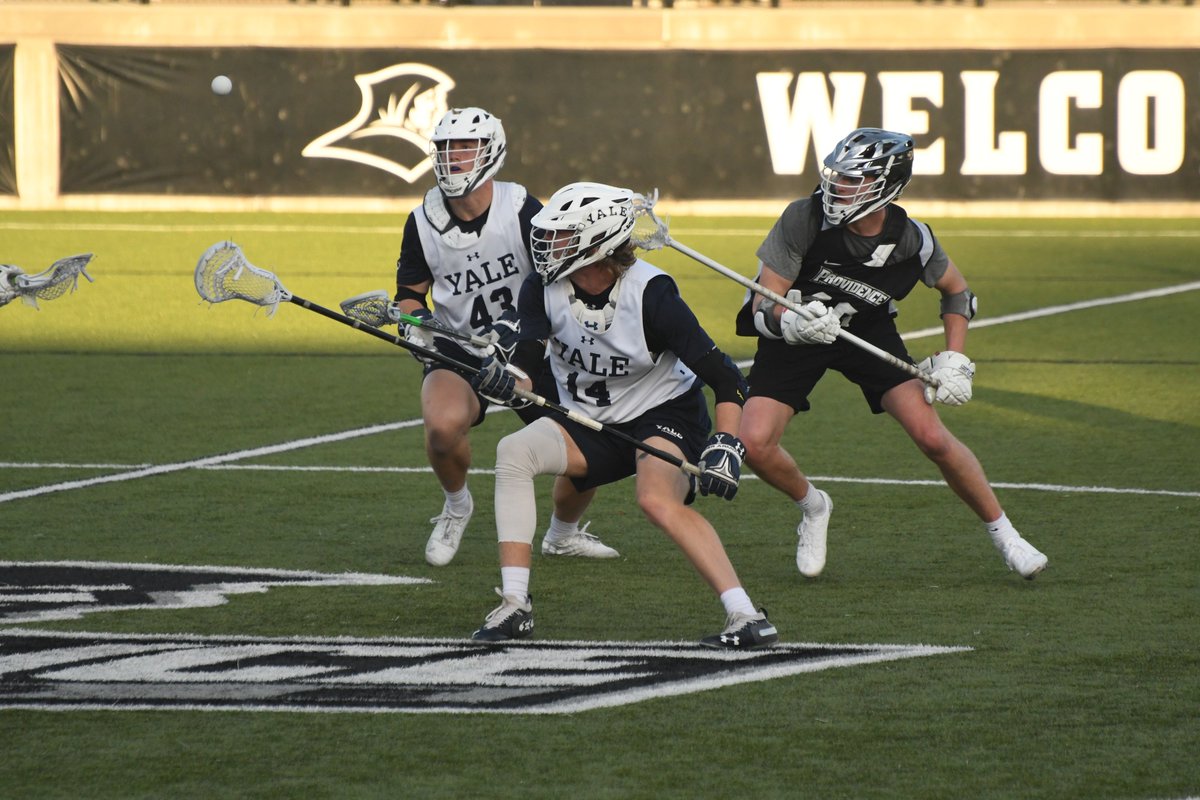 If this all sounds like it’s up your alley, I highly suggest doing some more research into NAIA lacrosse programs and finding where you could fit in.
If this all sounds like it’s up your alley, I highly suggest doing some more research into NAIA lacrosse programs and finding where you could fit in.
What is Box Lacrosse? | GoodSports USA
What are the key differences between Indoor Field lacrosse and Box Lacrosse?
Safety
The US Box Lacrosse Association (USBOXLA) rulebook contains rules that protect its players in this indoor setting. Field lacrosse rules (NFHS – boys) do not address and protect players who participate in an environment with boards. Box Lacrosse is a stick skills based game and unlike field lacrosse or indoor field lacrosse its rules severely punish open field hits, hits from behind, take out checks, man/ball loose ball techniques and stick swinging defensive techniques.
Field Lacrosse
Indoor field lacrosse is an offseason field lacrosse sport governed by the NFHS (field lacrosse rulebook). Indoor fielded Lacrosse: 6ftx6ft field lacrosse goals are used with goaltenders only wearing field lacrosse equipment.
Box Lacrosse
Offensive and defense techniques and philosophies are very different than field lacrosse. The nets are 20 sq-ft smaller than 6×6’s and goalies are padded very well, a player and/or players must develop a unique skills in order to score on the well-padded goalie. The game is quick using a 30 second shot clock (which forces players to work together in team atmosphere to move the ball quickly before losing possession) allowing all 5 players to go anywhere in the Box. The game itself is Offense to Defense and Defense to Offense transitions increasing the overall speed and intensity of game being played. Box lacrosse’s defensive techniques limit the effectiveness of field lacrosse’s 1-on-1 doges and promotes the creativity of off ball, 2 man, and team play.
Box lacrosse is perfect for players who are looking to advance their skills and move on to play in higher levels of lacrosse. When returning to the field, players with box lacrosse experience typically have an advantage with more time and space. Coaches at the highest levels of NCAA Men’s Lacrosse have taken notice, and encourage participation in box lacrosse to their players and recruits as this gives them a unique skill set to bring to the field game.
Coaches at the highest levels of NCAA Men’s Lacrosse have taken notice, and encourage participation in box lacrosse to their players and recruits as this gives them a unique skill set to bring to the field game.
Equipment
Both player and goaltender equipment are different than field lacrosse. Box players wear additional pads to protect kidney and biceps and also wear long sleeved jerseys to cover any additional equipment. Box goalies are well padded they wear goalie gear like an ice hockey goalie.
Lacrosse Plays On in the Pandemic, Creating Tough Calls for Families
Alyssa Murray, a former all-American at Syracuse who is a director of the Iron Horse club in Austin, Texas, recently wrote an anguished essay on Inside Lacrosse in which she said that “so many youth tournaments are pressing forward holding their events of several hundred people without much thought of the potential risks and pressure that it will put on players to attend.”
Twenty of the 100 summer events for girls and boys sanctioned by U. S. Lacrosse, the sport’s national governing body, were canceled. U.S. Lacrosse also withdrew its endorsement of tournaments in Florida, Texas, California and other states where coronavirus cases were increasing, and issued recommendations about return-to-play protocols. In them, officials called for masks, social distancing and adherence to local rules, even as they acknowledged those rules — and public support for them — varied widely.
S. Lacrosse, the sport’s national governing body, were canceled. U.S. Lacrosse also withdrew its endorsement of tournaments in Florida, Texas, California and other states where coronavirus cases were increasing, and issued recommendations about return-to-play protocols. In them, officials called for masks, social distancing and adherence to local rules, even as they acknowledged those rules — and public support for them — varied widely.
“It’s all over the place because the return guidance and what you are allowed to do in each state is so different,” said Ann Kitt Carpenetti, vice president for lacrosse operations at U.S. Lacrosse. “We’re trying to balance the desires of families to go back to play with what’s safe for the kids and the community alike.”
In April, the Intercollegiate Women’s Lacrosse Coaches Association, known as the I.W.L.C.A., canceled its six recruiting tournaments for 2020, including the New England Cup. The association said it did not feel it could hold events and sufficiently protect the health of 3,000 to 14,000 players, parents and coaches who were expected to attend each showcase.
After a coronavirus outbreak in Louisiana had been linked to Mardi Gras celebrations, Liz Robertshaw, the executive director of the coaches association, said the organization felt “we can’t be the next New Orleans.”
The association directed Corrigan Sports Enterprises, the company that organized its showcases, to refund $1,700 of the $1,800 entry fee that each team had paid to participate. Instead, Corrigan decided to proceed with the showcases on its own. The I.W.L.C.A. sued, but even as the case is being contested in federal court in North Carolina, some games, including the ones in Connecticut, have gone ahead.
90,000 Lacrosse is … What is Lacrosse?
Lacrosse (fr. la crosse – “stick”) – a team game in which two teams try to hit the opponent’s goal with a rubber ball, using their feet and a projectile, which is a cross between a stick and a racket.
History of appearance
Ball players. Lithograph of the first half of the 19th century.
Winnipeg Shamrocks Team, 1904 Olympic Champions
The game was invented by the American Indians, who used it to train warriors and peacefully resolve conflicts between tribes.According to archaeological research, the prototype of lacrosse was known in the territory of modern Canada as early as the beginning of the fifteenth century. Teams at that time often consisted of several hundred people, and the length of the field for the game ranged from several hundred meters to several kilometers.
European settlers first got acquainted with this game in the 17th century, and by the beginning of the 19th century it began to gain popularity among the French population of Canada. The first official lacrosse match took place in Canada in 1867.
Lacrosse was included in the program of the Summer Olympic Games twice – in 1904 and 1908.
Game variants
Field layout for male lacrosse
Lacrosse in a box
Currently there are several varieties of lacrosse, differing in field size, number of players and rules. There are four main varieties: lacrosse in the field ( eng. ) ( on the grass or just lacrosse ), “lacrosse in a box” ( eng. ), intercross ( eng.), polocross ( eng.). Since 1967, the men’s world championships in lacrosse on the grass ( eng. ) have been held, in which teams from various countries, as well as the Iroquois Indian tribe (since 1990), take part.
Current state
There are more than three dozen national lacrosse associations in the world, most of them are located in Europe and created in the last decade of the 20th century, but the leading countries are the USA and Canada, in the eastern regions of which lacrosse is very popular.
Lacrosse in Canada
In Canada, the game is the national summer sport. The Canadian Lacrosse Association was founded in 1867 and is the oldest in the world. Each year, there is an indoor lacrosse championship for adults and youth, in two divisions each, as well as a three-division outdoor lacrosse championship.
- Lacrosse box
- Mann Cup Senior “A” – held since 1901, the trophy is made of pure gold and costs about 25 thousand dollars [1] .
- Presidents Cup Senior “B”
- Minto Cup Junior “A”
- Founders Cup Junior “B”
- Open lacrosse
- Ross Cup Senior Division I (since 1984)
- Victory Trophy Senior Division II (since 1985)
- Baggataway Cup University
US Lacrosse
In the United States, along with the national lacrosse association, there is the Iroquois Nationals, which represent Indian tribes in international lacrosse competitions.
Lacrosse in other countries
Small communities of lacrosse have long existed in England and Australia. Since the 1990s, other national lacrosse associations began to appear, which now exist in two dozen European countries, in New Zealand, Japan, South Korea, etc. All of them are united in an international federation, with the exception of independent associations in India and China.
In Russia, this sport has barely begun to develop. There are two teams: “St.Petersburg Slayers “and” Moscow Rebels “, there is no national organization. The first official match in Russia took place on November 13, 2009 in St. Petersburg. Exactly one year later, another match took place in Moscow [2] .
See also
Notes
Literature
References
90,000 Lacrosse is … What is Lacrosse?
Lacrosse (fr. la crosse – “stick”) – a team game in which two teams try to hit the opponent’s goal with a rubber ball, using their feet and a projectile, which is a cross between a stick and a racket.
History of appearance
Ball players. Lithograph of the first half of the 19th century.
Winnipeg Shamrocks Team, 1904 Olympic Champions
The game was invented by the American Indians, who used it to train warriors and peacefully resolve conflicts between tribes. According to archaeological research, the prototype of lacrosse was known in the territory of modern Canada as early as the beginning of the fifteenth century. Teams at that time often consisted of several hundred people, and the length of the field for the game ranged from several hundred meters to several kilometers.
European settlers first got acquainted with this game in the 17th century, and by the beginning of the 19th century it began to gain popularity among the French population of Canada. The first official lacrosse match took place in Canada in 1867.
Lacrosse was included in the program of the Summer Olympic Games twice – in 1904 and 1908.
Game variants
Field layout for male lacrosse
Lacrosse in a box
Currently there are several varieties of lacrosse, differing in field size, number of players and rules.There are four main varieties: lacrosse in the field ( eng. ) ( on the grass or just lacrosse ), “lacrosse in a box” ( eng. ), intercross ( eng. ), polocross ( eng. ). Since 1967, the men’s world championships in lacrosse on the grass ( eng. ) have been held, in which teams from various countries, as well as the Iroquois Indian tribe (since 1990), take part.
Current state
There are more than three dozen national lacrosse associations in the world, most of them are located in Europe and created in the last decade of the 20th century, but the leading countries are the USA and Canada, in the eastern regions of which lacrosse is very popular.
Lacrosse in Canada
In Canada, the game is the national summer sport. The Canadian Lacrosse Association was founded in 1867 and is the oldest in the world. Each year, there is an indoor lacrosse championship for adults and youth, in two divisions each, as well as a three-division outdoor lacrosse championship.
- Lacrosse box
- Mann Cup Senior “A” – held since 1901, the trophy is made of pure gold and costs about 25 thousand dollars [1] .
- Presidents Cup Senior “B”
- Minto Cup Junior “A”
- Founders Cup Junior “B”
- Open lacrosse
- Ross Cup Senior Division I (since 1984)
- Victory Trophy Senior Division II (since 1985)
- Baggataway Cup University
US Lacrosse
In the United States, along with the national lacrosse association, there is the Iroquois Nationals, which represent Indian tribes in international lacrosse competitions.
Lacrosse in other countries
Small communities of lacrosse have long existed in England and Australia. Since the 1990s, other national lacrosse associations began to appear, which now exist in two dozen European countries, in New Zealand, Japan, South Korea, etc. All of them are united in an international federation, with the exception of independent associations in India and China.
In Russia, this sport has barely begun to develop. There are two teams: “St.Petersburg Slayers “and” Moscow Rebels “, there is no national organization. The first official match in Russia took place on November 13, 2009 in St. Petersburg. Exactly one year later, another match took place in Moscow [2] .
See also
Notes
Literature
References
90,000 Question: How to play lacrosse? – Sports and Fitness
Contents of the article:
Inclusion. Lacrosse
Video taken from the channel: TV Channel Afontovo
Lacrosse.Lacrosse
Show Description
Lacrosse, Canada’s national sport. Or rather, no, not so, this is the very first recognized national sport of the country of the maple leaf. Interestingly, with the Canadian climate, but a sport that requires a green and even lawn. For those who are not familiar with this sport, we tell….
Lacrosse is a team sport where people in the amount of 10 or 6 people run on the lawn with special hockey sticks, and with their feet or with the same hockey stick (by the way, # lacrosse is translated as # hockey stick), they are trying to hammer a rubber ball into the opponent’s goal….
There are several varieties of lacrosse:
– Lacrosse on the field, well, everything is clear, teams of 10 people each fight on the field. This is the classic version of the game;
– Lacrosse in a box, this is a mini-game indoors, the same rules, only in teams of 6 people ;.
– And also lacrosse is divided into male and female, there are not significant differences between them, but there are still, such as a different distance between the gates and the number of periods, and there are minutes in them ..
In Canada, this #sport number is one, though in summer sports ……
Well, and accordingly, regular annual lacrosse competitions are held here, both indoors and on the field.
Read the full article on the GoProSport.ru website.
Subscribe: https://m.youtube.com/channel/UCsSEjQKJY-EesmaECz7xKyQ.
Instagram: https://www.instagram.com/goprosport.ru.
Facebook: https://www.facebook.com/goprosport.rus.
Website: http://goprosport.ru/ here you will find the latest sports news ..
Our Zen: https://zen.yandex.ru/id/5addf195581669c1ef955e84.
More interesting videos:
https://www.youtube.com/watch?v=EpB3pV6oVts.
https://www.youtube.com/watch?v=uPD_ozqz4No.
https://www.youtube.com/watch?v=qrhdJdRKJeU.
https://www.youtube.com/watch?v=vxQVR2YXHBU.
https://www.youtube.com/watch?v=iGIhFkw7OWo.
https://www.youtube.com/watch?v=hdbszKvXtMI.
https://www.youtube.com/watch?v=Vys8lUbst8U.
https://www.youtube.com/watch?v=dDIs3Y-skD8.
https://www.youtube.com/watch?v=5iRXwHdpuPE.
#lacrosse #growthegame #lacrosselife #lacrossegame
Video taken from the channel: GoProSport
Teen Wolf: Scott plays lacrosse.
Video taken from the channel: RazerTV
Lacrosse practice game. Wolf cub. 1 season. 1 series
Video taken from the channel: Zeroman
Lacrosse | Peer
Video taken from the channel: TV Channel DOM
Lacrosse. Workout. What is this sport?
Video taken from the channel: SERGEY KALITIN
Scott plays lacrosse. Wolf cub. 1 season. 2 series
Video taken from the channel: Zeroman
.